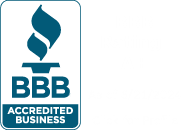We often get asked about crowdfunding for nonprofit organizations. Is it feasible? Is it sustainable? People are excited by the hype and potential upside. Yet, as with most new things, there is also some genuine skepticism about whether crowdfunding a charity actually works. Additionally, there is some uncertainty about what the risks might be.
At BryteBridge, we offer 20+ years of expertise in fundraising methods and strategies. Today, let’s take a look at crowdfunding nonprofit organizations, so that you can make a better determination as to whether this funding mechanism is right for you.
What Is A Crowdfunding Campaign?

Barely a decade old in its present form, crowdfunding takes the idea of meeting or supplementing your fundraising goals by tapping into mostly small-dollar donations from a large body of people. It’s like filling up a bucket with thousands of raindrops.
When you’re thinking about fundraising, you should always consider the possibility of crowdfunding. Nonprofits are often well-structured to solicit large numbers of small-dollar donations already, and many would-be donors are inclined to engage in crowdfunded charity drives.
However, it isn’t always a suitable option. At its best, crowdfunding taps into the Internet’s extremely long tail of potential donors, but this best-case scenario only works out if your organization already has the reach for it, and your donor base is inclined to support it.
3 Kinds of Crowdfunding Sites
- One-Time Fundraising Campaign: This is the simplest and most popular form of crowdfunding. You need only launch a fundraising campaign. You get to keep whatever money comes in, even if you don’t meet your fundraising goal. Sites like GoFundMe use this model.

When considering crowdfunding for nonprofit organizations, this is often the first option people think of, and it’s often the best choice for charity fundraising. If you’re generating money for a larger cause, and there are no specific “deliverables” attached (such as raising enough money to buy new solar panels for your nonprofit), then we tend to recommend this option. - All-or-Nothing, One-Time Fundraising Campaign: With this type of crowdfunding campaign, you MUST meet your fundraising goal, or you don’t get any money. Kickstarter, the very first crowdfunding site to gain mainstream traction, uses this model.
The benefit of having an all-or-nothing funding model—which is a form of assurance contract—is that it looks more trustworthy and generates goodwill. If people know that they won’t be billed until your fundraising goal is actually met, this can entice hesitant potential donors to go ahead and take the plunge.
As far as crowdfunding nonprofits is concerned, we recommend this model when you have a specific project in mind that needs to meet a minimum funding goal (such as buying those new solar panels).
- Maintaining a Continuous Fundraising Platform: If your charity has an option for processing recurring donations, then you already know their incredible fundraising power. Getting a donor to chip in $2 a month is worth much more on average than getting a donor to give $20 once.
“Crowdfunding” doesn’t have to be synonymous with one particular fundraising campaign. Instead, it can be a continual engine for income, with no specific campaign attached. Sites like Patreon use this model of crowdfunding. Nonprofits are often very well-suited to it!We frequently recommend this route, because many of your donors will prefer an automatic monthly charge due to its convenience, and you’ll enjoy tapping into recurring monthly support with very little administrative overhead.
You Can Use More Than One Crowdfunding Site
Tapping into your most loyal donors on a regular basis through a site like Patreon doesn’t stop you from running specific, one-time fundraising crowdfunding charity campaigns on a site like Kickstarter. You can do both! Many people who are inclined to donate to you in the first place in order to maintain general operations understand that you also sometimes have specific projects.
How Much Do Crowdfunding Campaigns Cost?
Crowdfunding sites are free to use: You’ll never have to write them a check. This is especially helpful for crowdfunding nonprofit organizations that are small or newly-launched and don’t have much capital. Anyone can crowdfund! (For help in starting up your nonprofit successfully, visit our Nonprofit Startup page.)
Crowdfunding sites instead make their money by taking a cut of whatever you bring in. The exact amount varies, but it tends to be in the neighborhood of 5 percent. There are also payment processing fees that go to the financial institutions, which adds another few percentage points. As a rule of thumb, you can bank on taking home a solid 90 percent of what you raise.
What About Taxes & Regulatory Considerations for Crowdfunding Campaigns?
This is a complicated topic that is still evolving today. Any fundraising mechanism for starting a business requires diligence and understanding so that you can properly comply with any legal requirements and provide useful, sound advice to your donors when they have questions.
Don’t be scared by the legal requirements of crowdfunding! Charity fundraising always requires diligence. We offer comprehensive compliance services to guide you through matters of this nature.
Launching a Crowdfunding Campaign to Create Your 501(c)(3)

Launching a 501(c)(3) nonprofit takes time and money! If you’ve been talking about starting a nonprofit for some time but are hesitant due to the costs of federal and state filings. Crowdfunding can be the first step toward achieving your nonprofit startup goals. From there, you might consider reaching out to a nonprofit startup consultancy, such as BryteBridge Nonprofit Solutions, to take your new endeavor to the next level.
At BryteBridge, we offer three different 501(c)(3) pricing packages to get you launched.
- Our Essentials package includes your incorporation filing, IRS 1023 form, EIN Tax ID, bylaws, board conflict of interest forms, and more.
- The Complete Compliance program provides everything in the Essential plus state tax preparation, charity regulation preparation, and one year of registered agent services (meaning you’ll never miss a government notice or required form).
- The BryteBridge Complete Concierge service handles everything you’ll need to do in the first year of operation plus full tax support.
[Learn More About Our 501(c)(3) Pricing Packages]
For many individuals, starting a personal crowdfunding campaign to secure funds to make your 501(c)(3) official is a great idea that many friends and family would enjoy giving to! Be sure to carefully articulate why you’re raising this money and how it will be used, and then start reaching out to all your connections. Social media, emails, “snail mail” and in-person conversations will help you to garner results and extend your reach, as well.
Let’s Talk About Reach

The success of crowdfunding a nonprofit depends heavily on your organization’s online platform, and that platform’s existing reach. “Reach” in this case refers to the minimum number of people whom you can reliably expect to be exposed to your fundraising content, either directly via your website, social media pages, or e-mail, or indirectly via social media reshares and email forwards from your core audience.
You can achieve and sustain reach by publishing compelling content on a regular basis, and putting it where people are likely to see it. These days, this primarily means social media networks—including video sites like YouTube and image-sharing sites like Instagram and Pinterest.
If you are not already producing content, then crowdfunding—especially one-time crowdfunding charity drives—is going to be a less reliable source of income. However, this doesn’t necessarily mean you shouldn’t invest in crowdfunding. Nonprofits that are just starting out, or don’t have a strong online presence, have a lot of flexibility in considering strategy. Ultimately, the question of whether a crowdfunding campaign is worth the time and effort is best answered on a case-by-case basis, and depends on your potential for building reach, your donor base, and your overall strategic plan.
Building reach is something we can help you with at BryteBridge, as part of building a successful strategic plan.
How Much Reach Does Your Crowdfunding Campaign Need?
Crowdfunding a nonprofit requires a lot of reach. Depending on your fundraising goals, a very rough estimate of how much reach you need is $2 raised for every one person who sees your fundraising content. So, if you want to raise $5,000, you’ll want your existing audience reach to be in the low thousands.
In practice, however, this varies so enormously that you can’t put a specific number on it. A single donor might chip in $2,500 all by themselves. On the other end of the spectrum, if your conversion rate is running low, or your average donation value is low, then one pair of eyeballs might only be worth a few cents. You can also expect some variance from one crowdfunding charity fundraiser to the next.
For these reasons, we prefer to think about audience reach in very general terms: If you want to raise hundreds of dollars, then aim for hundreds of donors. If you want to raise tens of thousands of dollars, then aim for tens of thousands of donors. Nonprofit organizations seeking crowdfunded income streams need to be mindful of the fact that this funding source must be carefully and diligently cultivated over time, and may only be supplementary.
How do you get people to see your content?
This is the secret sauce of social media! There is no one right answer, but with the end goal of crowdfunding, nonprofits should strive to be a positive, pleasant, and engaging presence online. Here are some tips:
- Make all of your content (not just information pertaining to your crowdfunding campaign) relevant and easy to share.
- Use distinctive visuals and relevant headlines.
- Encourage people to reshare your content, known as “signal boosting.”
- Engage people with interesting content that entices them to leave a comment or reshare.
- Don’t make every post a solicitation for your crowdfunding. Focus on your mission, and supplement that content with additional, related content that appeals to your target demographic.
- Stay active on your social media accounts and participate in the conversation.
- Be willing to go off-script so that you don’t come across as opportunistic or robotic.
- Stay positive and avoid arguments and controversial subjects that needlessly put off some prospective donors.
- Be sparing in your efforts to create a sense of urgency. People respond to urgency, but it also tires them out when overused. Save this tone for when a crowdfunding campaign is in full swing!
Forget About Going Viral
When people think about crowdfunding, it’s easy to assume that means your campaign may “go viral.” We say: Don’t waste your time! Going viral is the equivalent of winning the lottery, and it’s almost impossible to achieve with any consistency. It occurs when, by luck, your content captures the zeitgeist of the moment and leads to progressively larger social media accounts resharing your content.
Don’t rely on this as part of your crowdfunding campaign’s strategic planning. Do, however, take a look at our capacity development services, so that, if you get lucky enough to go viral, or if your crowdfunding charity efforts encounter unexpected levels of success, you are equipped to take full advantage of your good fortune!
Summary
When it comes to crowdfunding, nonprofit organizations often stand to develop meaningful new income as well as more efficiently retain existing income. It’s not for everyone, but it’s a powerful tool that’s there when you need it.



